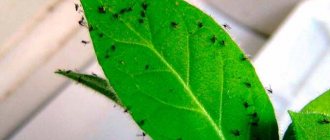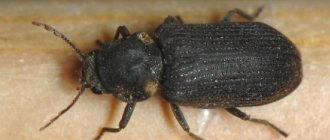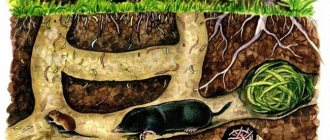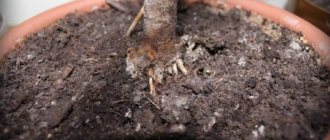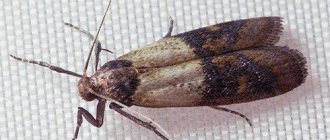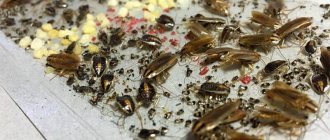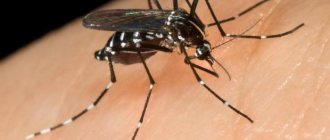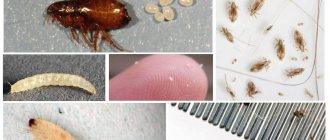Almost everyone knows who midges are. Insects that look like humpback mosquitoes are often encountered during the warm season. It is surprising that even such small creatures can cause a lot of trouble to a person, from the possibility of flying into a plate of food or a glass of drink, to the ability to carry an infection and bite. After all, there is also a type of pests whose food is the blood of mammals. However, before talking about what midges feed on, it is worth considering the characteristic structural features of these annoying pests.
Midges: general information
Midges cannot boast of large sizes - their length ranges from 1.2 mm (inhabitants of the tropics) to 6 mm (inhabitants of temperate and northern latitudes). The body is divided into 3 sections: head, chest and abdomen.
Females, unlike narrow-minded males, have a wider forehead. The antennae of insects are covered with hairs that can be of all shades: from dark yellow to brown and even black. In queens, they are shorter and thicker, and also taper towards the tips. The facet eyes (that is, paired organs of vision) of females are the same, but the facets of males are different: the upper ones are larger, the lower ones are smaller. The wings are transparent, covered with small tubercles; when at rest, they fold horizontally, covering one another.
The wings of midges have a rounded oval shape, their length usually reaches 2/3 of the insect's body
Diet
Male midges are vegetarians that feed on nectar and plant sap. Females can be called real gourmets. Their main delicacy is blood. They obtain this product by biting people, cows, horses, sheep, goats, roe deer, buffaloes, and poultry (chickens, ducks, etc.).
Cattle suffer the most from midges
Life cycle
Like all living creatures, the lifespan of a midge depends on the way it feeds. If these insects feed on plants, they live less than a week. Blood-sucking individuals can live for about a month. Moreover, some females are viable for almost 3 months.
The life cycle of a midge consists of several stages:
- egg (in one clutch there are from 50 to 100 oval eggs measuring from 0.15 to 0.4 mm, they mature in 5 to 7 days);
- larva (on the worm-shaped chest there is a special hook for movement, and on the back there is a suction cup for fixing the location);
- pupa (the cocoon can be of different shapes, but is always covered with hairs; at this stage of development, the midge does not eat - the needs are only for water and an influx of oxygen);
- adult or imago (appears 2–3 weeks after the pupa).
Insects wait out the cold months in the egg stage, rarely in the larval stage. In especially hot climate zones, midges overwinter as larvae, but spend the summer as adults in reservoirs.
In 12 months, an insect can produce 1–3 generations.
The life cycle of a midge usually does not exceed one month
Habitats
The midge settles where there is moisture, since all stages of development from egg to adult require water. An important role is played by what species the insect belongs to. That is why some individuals are comfortable in the garden, others at home in the kitchen, and others near bodies of water.
Kinds
The place of residence of midges is determined by their species and the life characteristics of a particular population. Considering the fact that there are about 1800 varieties of them in nature, we will present only the most common ones.
Table: varieties of midges
| Species name | Peculiarities | Possible risks |
| Decorated (spotted) | Length from 3 mm to 4.5 mm. There is a silver border on the back, the color of the antennae and body depends on the subspecies. They live on all continents. | Females drink the blood of humans and animals. |
| Horse | Length from 2.5 to 4 mm. Silvery-golden hairs on the back and abdomen; males have silvery spots on the upper part of the body. They live in heavily polluted waters and are a bloodsucker. | They attack people and animals. In horses it accumulates in the ears. |
| Redhead | Length up to 3.5 mm, facets red. Females have yellow legs. Distributed in Eastern Europe and the European part of Russia. They live in the channels of large rivers covered with silt. | They bite people and animals. |
| Tundra | Size up to 3 mm. Black back with a silver tint and golden hairs in males. Gray-black back without silver inclusions and dark yellow belly in females. Midges live in the northern regions. | Malicious bloodsuckers. They attack people and animals. |
| Short-palpid | Length about 3 mm, body black with silver spots. They live mainly from Karelia to the Arkhangelsk and Moscow regions. | They bite people and animals. |
| Silver | Length from 3.5 mm to 3.8 mm. On the backs of males there are narrow silvery spots; on females the shade is more saturated. The legs are brown-black with a yellowish tint. They live in Russia, Western Europe and North America. | They attack people and animals. |
| Light-browed | Length about 4 mm. The paws of males are black, those of females are brown-black. They live in the territory of northeastern Europe, Russia (European part, Transbaikalia). | |
| White (podura, springtail) | Body up to 1 mm. They don't fly, but they jump well. They live in the trays of pots of indoor plants, on the surface of the soil. | From waste products, pathogenic fungi may appear on the reverse side of the leaves. Midges infect plants with viruses, the larvae suppress the root system. |
| Sciarida (fungus gnat) | They look like small worms, body length up to 3 mm. Translucent color, black dot on the head. | Adults flying over the flower are harmless, but the larvae feed on the sap of the roots and also worsen the quality of the soil, as they prevent the penetration of oxygen into the soil. |
About house midges
Midges can appear even in the apartment of the cleanest housewife. So one of its very common representatives are Drosophila - these are small insects, about 2 mm, that live in spoiled fruits or vegetables. It is with these products, purchased at the market or in a store, that pests most often enter the house. Drosophila do not pose a particular danger to humans, but they become one of the main enemies of garden and vegetable fruits. The appearance of such midges in flower pots with orchids and other plants is evidence of excessive watering of the flower.
The question of whether midges bite is puzzled by those who once discovered various kinds of rashes on the skin, accompanied by itching, burning, pain and swelling. It may seem strange to many, but there are also midges that can bite. Midge bites The question of which midges bite cannot be given a definite answer. When there are too many adults and there is not enough food for everyone, they are capable of attacking humans in search of food. This is why midges fly to the skin. But there are also blood-sucking representatives of this family, which bite through the skin and feed exclusively on the blood of mammals. This is precisely what explains why midges bite.
However, pests do not bite at night, as bed bugs do, but are active during the daytime. That's why they don't start in bed or bed.
Black midges are much larger than fruit flies, their body length reaches up to 6 mm. Outwardly, they are very similar to flies; they can be house flies or earth flies. Pests do not dig into the skin with their stings like other insects, but gnaw out a piece of flesh, in place of which small wounds form. During an attack, the biting midge injects an anesthetic liquid. That is why the pain from a bite is not felt immediately, but after some time.
Saliva that gets into the wound often causes an allergic reaction. Multiple bites made by biting midges may be accompanied by fever, rapid heartbeat and enlarged lymph nodes.
Danger of bites
Midge bites affect areas of the skin not covered by clothing: face, neck, arms, legs. Usually bloodsuckers attack en masse and only during the daytime. They are especially active in the summer. At the same time, the optimal temperature conditions for “eating” are from 17 to 20 °C. The midge circles over its victim for a long time, then crawls over the body in search of a place with thin skin suitable for a bite, since the bloodsucker has too short a proboscis, which the thick epidermis simply cannot bite through. Because of this careful targeting, midges often end up in the ears, eyes and nose. It has been noticed that most often midges bite human legs. However, a clear explanation for this preference has not yet been found.
Decorated, tundra, and red-headed midges are dangerous because they are carriers of onchocerciasis (damage to the skin, eyes and lymph nodes by helminths).
This is interesting. As a result of many years of research, scientists have come to the conclusion that every 15 midges are infected with onchocerciasis in livestock.
All blood-sucking species of midges can provoke simulidotoxicosis, an allergic disease that is manifested by itching, the development of edema and the appearance of papules. These symptoms may be accompanied by tachycardia and hyperemia, that is, overcrowding of blood vessels. In addition, midges carry infectious diseases that affect poultry and pigeons. In hot latitudes, flying bloodsuckers can infect such deadly infections as:
- leprosy;
- anthrax;
- plague;
- glanders.
Midges bite all exposed skin
Midges are dangerous because their bites can cause allergic reactions (especially in children). This is due to the fact that insect saliva gets onto the damaged area.
It is very important not to scratch the bite site (otherwise you can get infected), but to neutralize the effect of the toxic substance with alcohol. If the mucous membrane is affected, then you cannot do without the help of a specialist. In this case it is prohibited:
- apply medications to the bite site without the approval of a doctor;
- treat the damaged area with household chemicals;
- apply any ointments to the wound, as they will provoke a strong burning sensation.
Itching and swelling are considered the first signs of an allergic reaction to midge bites.
This is interesting. Midges, despite their modest size, bite even more painfully than mosquitoes.
What do they eat?
Midge Food
Knowing what midges eat can help prevent the spread of pests.
- Spoiled vegetables and fruits. Drosophila's favorite food in the kitchen is rotten fruits and vegetables: these can be not only apples and bananas, but even beets and onions. Pests also use rotten fruits for reproduction, laying eggs in their pulp. The midge larvae that appear over time use this rot as food.
- Home canning. Quite often, midges eat canned food that has been left open on the table for a long time. And the longer this period is, the more favorable the environment becomes for reproduction and the appearance of larvae.
- Animal feed. Oddly enough, in addition to pets, midges also like to eat animal food. Free access to food attracts many household pests.
- Insects are also capable of feeding on meat and fish products left on the table.
- Waste in the trash can also attracts the attention of midges.
Protection against midges outdoors
Adjusting your outdoor schedule to the life cycle of a particular midge species is too much and a waste of time. You should turn to more effective insect control options.
Professional approach
There are two types of products that repel midges from the human body: repellents and fumigators. The first ones are applied directly to the skin, the second ones destroy insects within a certain radius.
Repellents (sprays, ointments, lotions)
They are applied to the skin, thereby blocking the olfactory receptors of insects.
- Mosquitall ointment based on diethyltoluamide. Effectively repels midges for 8–9 hours, disorienting the olfactory receptors of insects. Has a pleasant vanilla scent.
- Aerosol Help. Valid for 6–8 hours. Apply to skin and/or clothing. It is dangerous for children under 12 years of age, pregnant and lactating women to use the product.
- Aerosol Gardex based on diethyltuolamide. Lasts 4.5–6 hours.
Aerosol is the most convenient form of repellent
Fumigators
Contains toxic substances that kill midges. Fumigators can be of two types:
- pyrotechnic (the spiral smolders and smokes, releasing substances toxic to midges);
- electric (under the influence of heat, a plate soaked in poison or a bottle with toxic liquid releases these substances into the air and kills midges).
The most popular and effective fumigators are products from the Raid, Mosquitall, and Fumitox brands.
Spiral fumigators are convenient to use outdoors, but their coverage area is not very large
Folk methods of protection
If the use of chemicals contradicts your principles, you can use folk advice.
- Infusion with vegetable oil. Leaves of wormwood, parsley, tobacco, eucalyptus or fir sprigs, vanilla pods, anise seeds, clove buds are infused in oil for 2-3 weeks. After straining the mixture, apply it to exposed areas of the body.
- Ointment based on baby cream or Vaseline. Grind lavender leaves, basil, rosemary, bird cherry blossoms or garlic cloves, lemon zest and mix with the base. Apply as needed.
- Alcohol tincture. In 500 ml of 35% vodka, put 250 g of walnut shells, add 10-15 drops of camphor oil (or 30-40 drops of peppermint oil), leave for 2 days. We lubricate exposed areas of the body, except the face, as alcohol can cause burns.
- Essential oil mixtures. Strong smells repel midges, while many people enjoy this type of aromatherapy.
Table: Effective Essential Oil Blends
| Composition | Ingredients |
| Mint-lavender | 5 drops of lavender oil; 5 drops of mint oil; 20 drops of citronella oil; 0.5 liters of water. |
| Lemon-basil | 5 drops of lemon oil; 20 drops of citronella oil; 10 drops of basil oil; 0.5 liters of water. |
| Vanilla-lavender | 5 drops vanilla oil; 20 drops of citronella oil; 5 drops of lavender oil; 0.5 liters of water. |
Prevention
Since midges, judging by the species table, inhabit the entire globe, with the exception of some northern corners and deserts, it is, to put it mildly, useless to fight the very existence of these insects. All that remains is to choose a means of protection against their bites and listen to the recommendations of experts:
- You should not choose places for walks or picnics near bodies of water overgrown with vegetation;
- at the height of summer there is no need to wear too revealing light clothes;
- You should not stay for a long time in damp shady forests and near swampy lowlands;
- It is better to organize walks and picnics away from livestock farms.
Chemicals for pest control
Chemicals are effective in controlling midges. When choosing a product, carefully study the instructions or consult with the seller to select a composition that destroys a specific type of pest. Also read the rules for using the drug, the proportions for preparing the solution and the recommended safety measures. When working with insecticides, use rubber gloves and a respirator, and treat plants away from food, children and pets.
Insecticides will help destroy insects; when working with them, you must strictly follow the instructions and observe the recommended safety measures.
To destroy midges, sprays and aerosols based on dichlorvos are used - Raptor, Raid, "Neo", etc. Instructions for using the drugs:
- Loosen the dried soil of the plant that has been attacked by midges.
- Place the pot in a thick plastic bag.
- Spray the product onto the soil, avoiding contact with the leaves.
- Tie the bag tightly and leave for 5-7 hours. After the allotted time, the insects and their larvae will die.
Preparations intended for preparing solutions or using in their natural form - “Bazudin”, “Agravertin”, “Aktara”, “Grom-2”, “Mukhoed”, etc. will help you cope with flies in indoor flowers.
Varieties
You don't need to be a biologist to know that individuals of each species may have external differences, according to which they are divided into subspecies.
The insects in question have their own varieties.
Different hereditary forms of the Drosophila fly
Drosophila are:
- Black Drosophila.
- Fruit Drosophila.
- Flightless Drosophila.
Whitefly happens:
- Greenhouse whitefly.
Whiteflies - Citrus whitefly.
- Strawberry whitefly.
- Cabbage whitefly.
- Tobacco whitefly.
Sciarids are also divided into subspecies:
- Licoriella.
- Bradysia.
These two species can most often be found in Russia, where 96 subspecies of these insects have been recorded.
Kitchen
The most important rule is to never leave a trash bin overnight. The next steps will be:
Garbage bin in the kitchen with leftover vegetables
- monitor the freshness of products (prevent the formation of rot);
- It is recommended to use adhesive tape (both outside and inside cabinets);
- washcloths and washcloths should be twisted and dried after use;
- prevent the formation of fatty deposits and clogging of the drain pipe of the sink and hob;
- no leakage or contamination of taps;
- make homemade traps in the form of a cup with rotting fruit or unfinished juice (the area where a large number of midges get in, it must be tied tightly and thrown away).
Practical significance of bloodworms
Another name for mosquito larvae is bloodworm. Since not only toads, but also fish actively feed on these small worms, they are often used by aquarists, as well as experienced fishermen. Bloodworms go on sale after careful packaging. This is because small larvae are suitable only for aquarium phenotypes, but large ones are suitable for catching river fish. How actively a barb or gudgeon will consume mosquito offspring depends on the degree of its freshness and proper preparation. Therefore, experienced fishermen purchase larvae for feeding only in specialized departments.
Prevention
To prevent unwanted neighbors from appearing again, you should follow some simple recommendations. First of all, maintain order.
- All products must be closed: this especially applies to fruits, berries and cut fruits. Cover them or refrigerate them to prevent rotting.
- The same applies to drinks: do not leave juice, lemonade, tea, beer or wine in glasses or open bottles.
- Dispose of trash promptly, especially if you throw food waste into the bin.
- Do not accumulate dirty dishes in the sink: dishes left overnight may already become the object of attention of food flies in the morning.
- Periodically check for pests and larvae in cereals, pasta, nuts and dried fruits. Throw out the infected mercilessly. To prevent voracious bugs from getting into your supplies, store them in airtight containers or jars.
- Maintain general cleanliness: Wash all surfaces thoroughly, remembering to look behind cabinets and appliances for dirt.
- Systematically clean the drain with special formulas or folk compositions.
As for indoor plants, they should also be properly cared for. Avoid overwatering. If you use tea leaves or other fertilizers, remove them promptly to prevent rotting.
In general, if there is a persistent problem, replace the topsoil before the sciarids colonize it. You can also sprinkle the soil with small pebbles or sand. This not only looks beautiful, but also protects against the dominance of insects.
The midge has a negative attitude towards the specific smell of geranium and avoids it, therefore, standing on the windowsill, it repels pests.
To avoid unwanted residents from the street or neighbors, install mosquito nets on windows and ventilation.
Nutrition
The feeding process occurs exclusively during the warm daytime. In the evening, at night or in cloudy weather, midges are not active. Blood is food only for females. Males feed on flowers.
External structure of a housefly
In different regions, the same species of midges behave differently. For example: broad-legged, decorated or creeping - in the tundra zone they are a real natural disaster for the entire population of animals and humans. There is “no life” from her. And a little further south, in the forest-steppe and steppe zones of the country, they are not active as blood-sucking insects.
Folk recipes
At home, traditional medicine recipes can be used to relieve swelling after a midge bite, eliminate itching and prevent infection of wounds:
- Baking soda and vinegar have worked well as a means to relieve swelling. To do this, you need to prepare a soda solution, moisten a gauze bandage with it and apply it to the affected skin. Soda paste will help eliminate swelling in a few hours. To prepare it, soda must be mixed with water to the consistency of a thick paste. Apply the resulting substance periodically to damaged skin.
- Laundry soap is a universal remedy for redness, swelling and itching. Soap foam is applied to the swollen area and washed off after drying.
- If there are no medications at home, swelling can be eliminated using any product containing menthol. In critical situations, the use of toothpastes and mouth rinses is allowed.
- Cold compresses are suitable to relieve itching and swelling after bites. Frozen meat, ice cubes, cold water, in short, everything you can find in the refrigerator is applied to the swollen areas.
- In nature, you can provide emergency assistance to yourself or your child using a plantain leaf. Apply the pre-washed sheet to the affected area and attach it with a bandage. Dandelion leaf also has the effect of eliminating swelling.
- You can eliminate the discomfort after a midge bite using potatoes. To do this, apply a cut of a peeled tuber, juice or grated potato to the damaged skin.
- Applications of boric alcohol or an aqueous solution of boric acid will relieve itching and have an antiseptic effect.
- Onions are a recognized folk remedy for relieving pain and reducing swelling after a housefly bite. The onion should be chopped, wrapped in gauze and applied to the bite site.
Treatment options
Treatment for a midge bite should begin immediately after a wound or itching sensation is detected.
The consequences of a midge bite can be different:
- severe itching or pain in the affected area;
- increased body temperature;
- swelling of the limbs or wound site;
- skin redness;
- low blood pressure;
- enlarged lymph nodes and pain during palpation;
- rapid pulse;
- weakness of the body;
- feverish condition.
Treatment at home is acceptable if there is slight redness on the skin and mild itching. In other cases, you should consult a doctor to avoid serious consequences.
The manifestation of an allergy to a midge bite depends on many factors: the number of affected skin areas, the age of the victim, individual intolerance to any substances, weather conditions (humidity, air temperature, atmospheric pressure) and others.
Getting midges on the mucous membrane of the eye causes no less problems. In addition to discomfort, the insect can cause infection. To prevent unwanted consequences, you should rinse your eyes with warm tea or chamomile.
How to treat a midge bite depends on what symptoms the victim has and how he feels.
| Symptoms after midge bites | Treatment methods and drugs |
| Skin redness, slight swelling, itching | Treat the affected areas with an alcohol-based solution. Apply antiallergic ointments and gels with a cooling effect to the affected areas: Fenistil, Gioksizon, Cynovit, Prednisolone, Bepanten. |
| Severe allergies, accompanied by swelling of the affected areas of the skin, increased body temperature and weakness of the body | Immediate use of antihistamines such as Tavegil, Claritin, Loratadine, Diazolin and others. Apply alcohol lotions to the affected areas of the body several times a day. Drink plenty of fluids and avoid foods that can cause allergic reactions. |
| A severe allergic reaction to a bite with an increase in body temperature to 39°C, enlarged lymph nodes, tachycardia, low blood pressure, severe weakness of the body, increased sweating, fever, severe swelling. | Taking any antihistamine and immediately going to the hospital. |
If a person has a tendency to allergies, after skin damage by a midge, you need to carefully monitor your well-being and periodically measure your body temperature, blood pressure, and pulse. If these indicators deviate from the norm, you should immediately consult a doctor. People at risk of allergies should always have an antihistamine on hand.
Flower pots
Karbofos - a remedy for midges in the apartment
If a midge has settled on your favorite flowers and is interfering with their development, you need to do the following:
- reduce watering the plant to a minimum (how much to water? just a little);
- if tea leaves were used as fertilizer, it must be removed from the surface of the soil in the flower pot;
- stick up to five matches into the ground (gray side down);
- spray the plant with a weak solution of potassium permanganate;
- use of store-bought drugs: “Karbofos”, “Fitoverm”, “Agravertin”.
How to prevent insects from appearing in an apartment?
The appearance of midges in the house can be prevented if you follow certain rules.
Basic recommendations:
- Take out the trash regularly and do not leave food waste overnight;
- periodically conduct an audit of vegetable and fruit stocks, removing rotten specimens;
- do wet cleaning in a timely manner;
- water indoor plants moderately in winter;
- periodically ventilate the apartment;
- change the water in the aquarium and rinse the algae as necessary;
- Pet food should not be left in bowls; it must be poured before feeding.
Habitat
The larva that emerges from the eggs lives only in running water.
Midge larvae are very sensitive to the amount of oxygen in the water. Therefore, in places with little content, they quickly die. Such places include standing water or an aquatic environment with a large number of rotting microorganisms.
If the environment in which midge larvae live changes, they are able to release cobwebs. How long is it? The length of this web reaches two meters. On it they stay for some time in the fast flow of the river. If the natural balance is restored, the larva returns through the web to its previous place of residence.
The adult emerges from the larva after 10-14 days (process duration: larva-pupa-adult - up to two weeks). Leaving its cocoon, the midge surrounds itself with an air bubble. It is in it that it rises to the surface from the water completely dry.
Live midge under a microscope
Development
Only a few dipterans require 10 to 12 days to complete the full development cycle. There are insects that reproduce only once during the year. The number of eggs laid may also vary.
Diptera
There are known midges that bear future offspring inside themselves, and when they are born, they immediately turn into a pupa. Another curious form of development has been discovered in some insect species. This is pedogenesis or the appearance of offspring in individuals who have not reached sexual maturity.
For example, we can take gall midges: a female can lay only 4 or 5 eggs, from which larvae will then hatch. In each of them, another 5 or 30 daughter larvae develop, which will then reproduce in the same way. At the same time, they use their mother for food. After several cycles they become pupae and then adults. Thus, development occurs without mating.
The same phenomenon was noted in several other dipterans. The female laid unfertilized eggs, which produced only female individuals. During the development of all dipterans, a phenomenon such as a rapid increase in numbers in a short period of time is often observed. And if this factor is not restrained, then the number of individuals can reach astronomical figures.
Bathroom
Here the main means of combating midges will be the elimination of dampness and moisture. It is necessary to monitor water flow and sewerage. Fix leaks in a timely manner and remove any resulting contamination.
Why and how midges appear in the bathroom
In the apartment, strong odors of natural origin will help in the fight against midges:
- the smell of garlic;
- the smell of incense;
- citrus smell;
- the smell of camphor (camphor is crushed and heated in a frying pan);
- the smell of crushed horseradish root.
It is important to remember that fighting midges is a labor-intensive and lengthy process. But by adopting all the methods, a person will always emerge victorious in this struggle.
